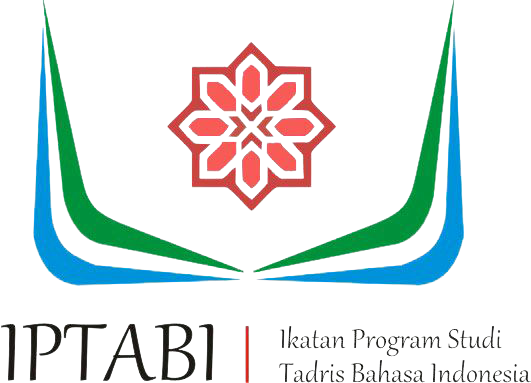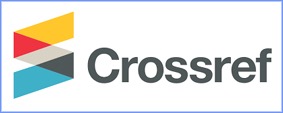Penokohan Pada Cerita Pendek karya Raditya Dika di Platform Medium
DOI:
https://doi.org/10.29240/estetik.v8i2.10344Keywords:
Raditya Dika, Medium, Short StoriesAbstract
This research aims to analyze characterization techniques in short stories by Raditya Dika published on the Medium platform. Using qualitative descriptive methods, data was collected through reading and recording dialogue and character interactions in several short stories. The research results show that Raditya Dika succeeded in creating lively and relatable characters through detailed descriptions, intelligent dialogue and distinctive humor. The characterization techniques used add depth and meaning to his short stories, reflecting sharp observations of human nature and social dynamics. This research reveals that the characters in Dika's works not only function to move the plot of the story, but also enrich the narrative and leave a deep impression on the reader.
Downloads
References
Ahyar, J. (2019). Apa Itu Sastra.
Al-Ma’ruf, A. I. (2017). Pengkajian Sastra Teori dan Aplikasi.
Ansiska, P., Paradida, Y. P., & Tarigan, M. L. (2023). Penokohan dan Ambisi Karakter King dalam Anime One Punch Man Karya One. Idea Jurnal Studi Jepang, 5(2).
Dewita, S. (2024). Ayo menulis Cerpen Panduan Praktis Meenulis Cerita Pendek Bagi Pelajar (Nurjanah (ed.)). CV. AZKA PUSTAKA.
Dr. Mars Caroline Wibowo. S.T., M. M. T. (2024). DESAIN KARAKTER TOKOH ANIMASI (M. . Dr. Ir. Agus Wibowo, M.Kom, M.Si (ed.)).
FITRIANI, H. (2019). Analisis Penokohan Tokoh Ainun dalam Novel Habibi dan Ainun Karya Baharudin Jusuf Habibi. Seulas Pinang: Jurnal Pendidikan Bahasa Dan Sastra, 1(1), 17–22. https://doi.org/10.30599/spbs.v1i1.518
Iskandar, R. Y. (2012). CITRA PEREMPUAN SUNDA DI DALAM KARYA SASTRA DAN FILM. Jurnal Sosioteknologi.
Magdalena, D. S., Hudiyono, Y., & Purwanti, P. (2021). TOKOH DAN PENOKOHAN DALAM NOVEL DIARY SANG MODEL KARYA NOVANKA RAJA. Jurnal Ilmu Budaya, 5(1).
Mysha, A., & Dengan, R. (2024). PERUNDUNGAN PADA TOKOH ANA DALAM NOVEL TELUK ALASKA. 79–83.
Nurgiyantoro, B. (1995). Teori Pengkajian Fiksi. GADJAH MADA UNIVERSITY PRESS.
Puspitasari, A. C. D. D. (2017). Hubungan Kemampuan Berpikir Kreatif dengan Kemampuan Menulis Cerpen (Studi Korelasional pada Siswa SMA Negeri 39 Jakarta). Susunan Artikel Pendidikan, 1(3).
Rachmadina Putri, S., Merdeka Citraningrum, D., & Muhammadiyah Jember, U. (2024). Analisis Karakteristik Tokoh Pada Film “Air Mata Di Ujung Sajadah” Karya Key Mangunsong. 18 Widyabastra, 12(1).
Sihotang, R. J., Purba, P. J., & Adiyat, M. Al. (2024). Analisis Gaya Bahasa Dalam Karya Sastra Cerpen Analysis. Jurnal Intelek Dan Cendikiawan Nusantara, 3, 3407–3419.
Sulaeman, R. R. (2021). ANALISIS PENOKOHAN DAN NILAI MORAL DALAM NOVEL “DRUNKEN MAMA†KARYA PIDI BAIQ. Jurnal Ikip Siliwangi, 4(6).
Suparno, D. (2020). Film Indonesia “Do’a untuk Ayah” Tinjauan Unsur Intrinsik dan Ekstrinsik. Buletin Al-Turas, 21(1), 17–34. https://doi.org/10.15408/bat.v21i1.3824
Viany, Y., Lering, M. E. D., & Owon, R. A. S. (2023). Analisis Gaya Bahasa dalam Novel Koala Kumal Karya Raditya Dika. Jurnal Genesis Indonesia, 2(02), 95–102. https://doi.org/10.56741/jgi.v2i02.244
Downloads
Published
How to Cite
Issue
Section
Citation Check
License
Copyright (c) 2025 Tara Merischa Ariyadi, Farida Yufarlina Rosita

This work is licensed under a Creative Commons Attribution-NonCommercial-ShareAlike 4.0 International License.
Authors who publish with ESTETIK : Jurnal Bahasa Indonesia agree to the following terms:
- Authors retain copyright and grant the journal right of first publication with the work simultaneously licensed under a Creative Commons Attribution-NonCommercial-ShareAlike 4.0 International License (CC BY-NC-SA 4.0) that allows others to share the work with an acknowledgment of the work's authorship and initial publication in this journal.
- Authors are able to enter into separate, additional contractual arrangements for the non-exclusive distribution of the journal's published version of the work (e.g., post it to an institutional repository or publish it in a book), with an acknowledgment of its initial publication in this journal.
- Authors are permitted and encouraged to post their work online (e.g., in institutional repositories or on their website) prior to and during the submission process, as it can lead to productive exchanges, as well as earlier and greater citation of published work (See The Effect of Open Access).






